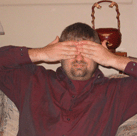Some posts from the Greenpage that might be worth your time...
But What’s The Audience For?
HowlRound: So, after a quiet cry in my studio, I realized that my artistic faith demanded that I question why it is that mainstream American theater has such a strong tendency to limit the audience’s role, to feed them a performance without demanding (or even leaving an opening for) any vision on their part, to create work that is only marginally different from what that audience might see at the movies. And, eventually, I began to wonder if the linear nature of traditional American theater-making is partially at fault and if my way of working as an artist isn’t contributing to this problem.
Record Biz Braces for Legal Battles Over Copyright Law
Rolling Stone Music: Starting in two years, the rights to classic albums by some of rock's biggest acts, including Bruce Springsteen's Darkness on the Edge of Town, Billy Joel's 52nd Street and the Eagles' The Long Run, could revert back to those artists. The change threatens to upend the music business – putting more cash in musicians' pockets and less in those of the labels. "It's something I've thought about on and off for a while, and it got put on the back burner because it wasn't timely," says Eagles singer and drummer Don Henley, who founded the Recording Artists Coalition, which advocates for artists' rights. "And now the time has come."Looking back at the cultural impact of 9/11
Salon.com: The second entry in our slide show series about pop culture after 9/11 covers three years, 2002-2004. It was a dense and lively period that saw movies, TV, music, literature and comics shifting out of a numb, somewhat disconnected state and becoming more reactive, then provocative, and by 2004 -- an election year -- combative.Wacom Inkling May Become My Favorite Gadget of All Time
Gizmodo: Being an obsessive compulsive sketching bastard, I'm all shades of erect looking at the new Wacom Inkling. With an exquisite design and 1024 levels of pressure, it looks like the perfect device for anyone who sketches anything, from illustrators to architects.The Creativity of Anger
Wired.com: At first glance, this cultivation of anger and criticism seems like a terrible idea. We assume that group collaboration requires niceties and affirmation, that we should always accentuate the positive. Just look at brainstorming, perhaps the most widely implemented creativity technique in the world. In the late 1940s, Alex Osborn, a founding partner of the advertising firm BBDO, outlined the virtues of brainstorming in a series of best-selling books. (He insisted that brainstorming could double the creative output of a group.) The most important principle, he said, was the total absence of criticism. According to Osborn, if people were worried about negative feedback, if they were concerned that their new ideas might get ridiculed by the group or the boss, then the brainstorming process would fail. “Creativity is so delicate a flower that praise tends to make it bloom, while discouragement often nips it in the bud,” Osborn wrote in Your Creative Power.


No comments:
Post a Comment